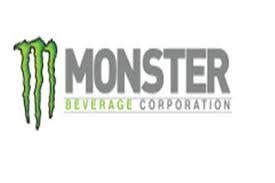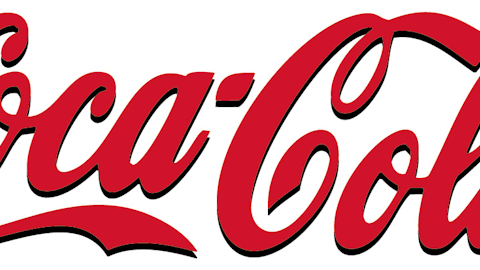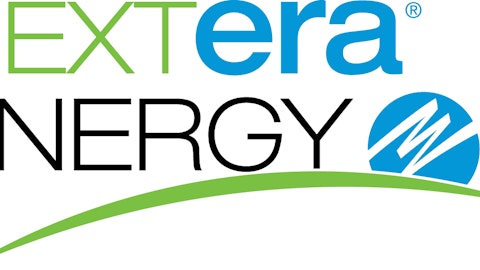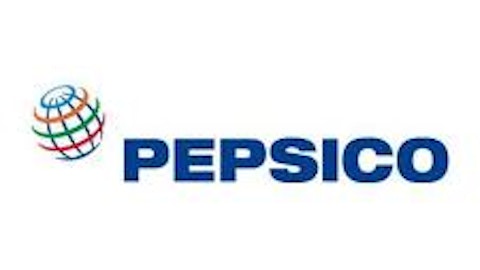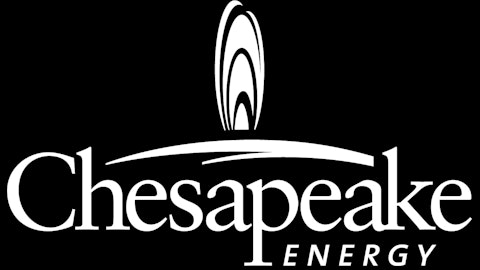Monster Beverage Corp (NASDAQ:MNST) has been around since the 1930s. It began in California as a fresh juice company, which went bankrupt in 1988. The same year, the company was bought by California CoPackers and was renamed Hansen Beverage. On January 2012, the company became public and changed its name to Monster Beverage Corp (NASDAQ:MNST).
Long gone are the days when Monster ancestor Hansen’s Natural manufactured juice. Monster Beverage Corp (NASDAQ:MNST)’s main revenue component now is its Monster Beverage Corp (NASDAQ:MNST) brand, which, according to Morningstar, makes it the largest seller of energy drinks in the United States convenience-store channel (a 31% unit share versus privately held Red Bull’s 27%). Furthermore, the company went from generating $1.3B of revenue in 2010 to $2.06 in 2012. Way to go!
But will Monster Beverage Corp (NASDAQ:MNST)’s revenue continue growing at the same rate? Apparently, the market thinks so. In the past three months, Monster Beverage Corp (NASDAQ:MNST)’s stock was one of the best performing among beverage and/or energy-drink manufacturers. Personally, I think that Monster Beverage is not only a stock with great short-term upward momentum, but also a growth stock which can be a great investment for a long-term investment horizon. Below, I explain why using four key points:
1. Plenty of room for international expansion available
Some may think that Monster is big enough to continue expanding its revenue at the same growth rate. That may be true for the U.S., where retail sales are just slightly below Red Bull, but how about international operations?
First of all, Monster Beverages only covers 80 countries, in comparison with Red Bull’s 164-country network. According to Morningstar analyst Thomas Mullarkey, this shows that Monster Beverage’s growth is just starting. Despite offering more quantity for the same price and an appealing design and concept to the young, Monster’s revenue outside of the United States is roughly 10% of what Red Bull generates!
Management is committed to achieving international expansion and therefore Monster Beverage’s marketing budget will, most likely, continue increasing. The company has been quite aggressive with pricing. In Japan, for example, a Monster can is 20% cheaper than Red Bull. And because of its interesting design, its curious name and price, many are starting to become loyal customers. A strong brand in the making!
Also notice that as Monster continues expanding its international operations, it will start benefiting from economies of scale and it will also become able to raise its price, thereby increasing international profits. Regarding this point, Stifel analyst Mark Astrachan said in April that Monster’s annual operating profits from sales outside of the US would increase from $5M last year to $101M in 2015. At the same time, international operating margins would rise from 1.1% to 13.4%.
The fact: Monster Beverage’s international revenue grew 38% in 2012. Domestically, it grew 17.3%.
2. Monster does not own a distribution network
Instead of building its own distribution network, which is a very expensive thing to do, Monster uses some of its partners’ networks, including The Coca-Cola Company (NYSE:KO)‘s . This may sound like a disadvantage, but it is totally the opposite. Maintaining a distribution network is certainly not a priority for Monster at this moment. Instead, the company is focusing on higher-return activities, like building its brand internationally.
Even if Monster decides to start building its own distribution network, it could take many years and a huge amount of capital to achieve a decent scale. Furthermore, the enormous amount of investment needed to establish a consolidated distribution network could reduce Monster’s return on investment so much that it could stop being an attractive pick. Remember when PepsiCo, Inc. (NYSE:PEP) tried to consolidate its bottler factories? By increasing the asset base, PepsiCo, Inc. (NYSE:PEP)’s consolidation efforts had a negative effect on the return on invested capital, a crucial input in valuation models. Furthermore, Pepsi also increased its cost base and added pressure to margins.
And despite its consolidation efforts, its network can never be better at distributing than The Coca-Cola Company (NYSE:KO)’s. Coca-Cola is, in terms of distribution network, the king. Covering 200 countries, from developing markets in South America to big cities in Asia, Coca-Cola’s network has no rivals.
Notice, however, that using Coca-Cola’s network is risky. After all, Coca-Cola is one of Monster Beverage’s most important competitors, both directly and indirectly. Coca-Cola manufactures energy drinks, which are direct competitors. But at the same time, Coca-Cola consumers could replace part of its Coke consumption for energy drinks. So, if Monster continues stealing market share, Coke would be forced to increase its distribution fees or to acquire Monster. The second outcome is more interesting for the bulls, and it is not a fantasy. Last year, rumors that Coca-cola was in talks with Monster caused the stock price to rise 15%. However, since Monster has not fully explored its international expansion potential, Coke would need to pay a high premium on the stock price, making this potential acquisition the largest one in its 126-year history. Only time will tell how Coke will react to Monster Beverage’s success.
3) The advantages to keeping the business simple
Monster may not have a snack business like PepsiCo (which owns Frito-Lay) to rely on when the beverage business is not doing well, or a massive network distribution like Coca-Cola to rent to other companies. This could make the stock a risky investment. However, we should also not underestimate the size and growth rate of the energy-drink market. By 2017, sales of energy drinks and shots are expected to hit $21.5 billion , according to a report from Packaged Facts. Such sales exceeded $12.5 billion last year.
Many of the new sales will come from the traditional carbonated soft drink category, which includes drinks like Pepsi or Coca-Cola, because many of these consumers are consuming too few cans of energy drinks. It is estimated that the average American consumes 400 cans of coke per year. How about Monster cans? Only 10.
The more than 30 different flavors that Monster has is expected to reduce this gap, by providing customers thirsty for caffeine with a new alternative, more efficient than traditional carbonated soft drinks.
The transition from carbonated soft drinks to other beverages is already taking place, at least in North America, and it is the main reason why PepsiCo and Coca-Cola starting developing other products as early as one decade ago. Both companies were correct at predicting that consumer tastes will shift. However, despite their enormous scale of operations, distribution networks and marketing budgets, it is curious that neither of them could enter in the energy drinks segment with the same level of success that Monster achieved.
4) A favorable adjustment of expectations
Monster shares had to deal with an improvement in downward momentum after the latest quarterly earnings. The stock price was $57 per share and fell as low as $46 while the conference call was taking place. The reason? The company missed the street consensus by a tiny bit: EPS came out at $0.37, while the street consensus was $0.38. I believe that the market reaction was exaggerated. But the upside is that stock price has recovered, and also now analysts have lower expectations for the rest of the year. Analysts are now expecting Monster to earn $0.64 per share in the next quarter and $2.15 per share for the whole 2013, an interesting decrease from the previous $2.26 figure. High expectations are a common disadvantage in growth stocks, but now that analysts have revised down their figures, it is more feasible for Monster to beat the street the next quarter.
Final Remarks
Call: Long
Type: Growth stock
Investment Horizon: 1 year
Potential Risks: Caffeine regulation, taxation
The stakes are high for Monster Beverage these days. The stock had been nothing short of a rocket, but recent developments have sent shares spiraling downward. Health scares sparked a number of investigations at the state and federal level into the energy drink’s role in several fatalities.
The article Four Reasons to Be Long Monster Beverage originally appeared on Fool.com.
Adrian Campos has no position in any stocks mentioned. The Motley Fool recommends Coca-Cola, Monster Beverage, and PepsiCo. The Motley Fool owns shares of Monster Beverage and PepsiCo. Adrian is a member of The Motley Fool Blog Network — entries represent the personal opinion of the blogger and are not formally edited.
Copyright © 1995 – 2013 The Motley Fool, LLC. All rights reserved. The Motley Fool has a disclosure policy.
